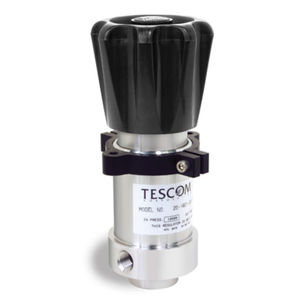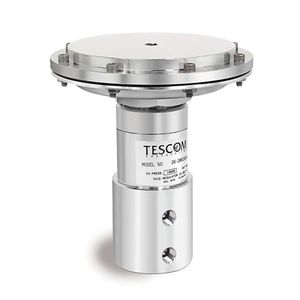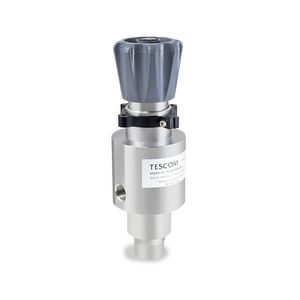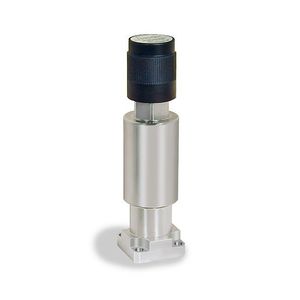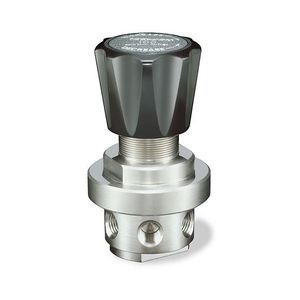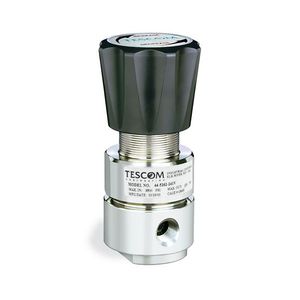
- Hydraulics - Pneumatics
- Valve
- Air pressure regulator and reducer
- Emerson Automation Solutions - TESCOM
Air pressure regulator and reducer TESCOM™ 26-1600 membranebrassstainless steel

Add to favorites
Compare this product
Characteristics
- Product
- for air
- Technology
- membrane
- Material
- brass, stainless steel, aluminum
- Applications
- for tests
- Other characteristics
- compact, with filter, high-precision, rugged
- Pressure
345 bar, 414 bar
(5,003.8 psi, 6,004.56 psi)- Orifice diameter
0.25 in, 0.38 in, 0.5 in
- Temperature
Max.: 74 °C
(165.2 °F)Min.: -40 °C
(-40 °F)
Description
26-1600 Series highly accurate, diaphragm sensed pressure reducing regulator offers adjustable venting standard. Panel mounting, integrated 40 micron filter and low handknob torque ensure a robust and adaptable design with many modifications available. Ideal for use in test equipment, calibration stands and production equipment.
Specifications
Material
-40 Micron Filter: 300 Series Stainless Steel
-O-Ring and Diaphragm: Buna-N
Valve Seat
-Main: CTFE
-Vent: 15% graphite-filled Teflon®
Remaining Parts
-300 Series Stainless Steel
-Port Size & TypeInlet & Outlet Port Type: SAE, NPTF, MS33649
Flow Capacity
-Cv = 0.08
Load Type
-Spring
Weight (without gauges)
-Stainless, Brass: 3.3 lbs / 1.5 kg
-Aluminum: 2.8 lbs / 1.3 kg
Additional Information
-For custom modifications or a complete system solution, please contact your local sales office.
Features
-Venting is standard (available with captured venting)
-Highly sensitive
-Features a non-rising stem and low operating torque
-Compact design
-Filter extends seat life
-Numerous porting options, panel mounting (bracket included)
-Easy maintenance with standard tools
Catalogs
Product Catalog - 2015
660 Pages
Exhibitions
Meet this supplier at the following exhibition(s):

Other Emerson Automation Solutions - TESCOM products
Regulators
Related Searches
- Valve
- Hand valve
- Control valve
- Ball valve
- Stainless steel valve
- Pneumatic valve
- Threaded valve
- Valve with flange
- Regulating valve
- Stop valve
- ISO valve
- Pressure limiter
- Pneumatically-operated valve
- Biogas valve
- Piston actuator valve
- Single-stage regulator
- Valve for the chemical industry
- Nickel-plated brass valve
- Industrial regulator
- Standard valve
*Prices are pre-tax. They exclude delivery charges and customs duties and do not include additional charges for installation or activation options. Prices are indicative only and may vary by country, with changes to the cost of raw materials and exchange rates.




